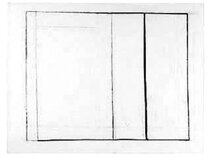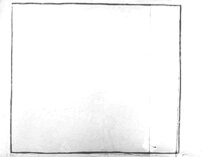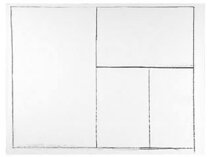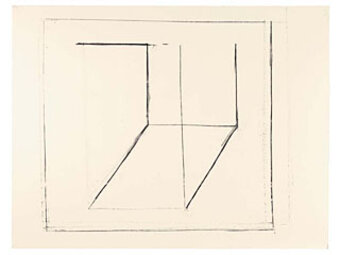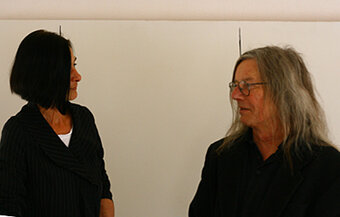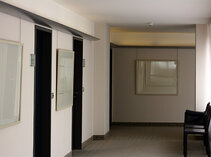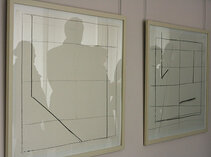Sam Szembek
2014: Sam Szembek, >Line to the surface, to the space<, drawingsIn order to "read" abstract art, you want to transform it into the world of objects. A non-representational object is transformed into a familiar figure. Here is an example: If a white sheet of paper in DIN A4 landscape format is divided in the middle with a black line, then one might associate it with an open book. However, if this vertical line is not in the middle but slightly off-center or in the third of the page, an association could be blocked. Perplexity on the part of the viewer sets in. There is a simple reason for this: I see nothing other than a white sheet and a line - somewhere.
Yes, where actually? On the surface? In a room? The viewer is thrown back to what he actually sees, a white surface with a black line. If, moreover, this surface is framed with a frame that is not necessarily straight, the viewer also notices that the line is not drawn with a ruler, of course. The white areas become more expressive and the whole thing suddenly appears to me as a designed structure.
At this moment, we have already brought the aesthetic into the drawing without having evaluated it. The sheet of paper gains reality without any effort at association, an artistic reality parallel to our familiar world of objects that cannot be related to this picture.
Charcoal on paper, 76x100 cm, 2009
Vertical and horizontal lines are supplemented with bevels so that three-dimensionality is created - very slowly, almost in slow motion. In a sense, you become a witness to the transformation from the second to the third dimension. If you take the duration of this transformation into account, then you find yourself "in the picture", in the fourth dimension, in the space-time that is binding for our reality.
Visitors are surprised by a large-format picture hanging in the first corridor. As you slowly walk towards it and pass the pictures on the left wall, which glide past you like shadows, you think you can see space in the two oversized hooks. Involuntarily, one completes the vanishing lines and soon imagines oneself in the middle of the artistic extension of the corridor.
The corridor leading off at right angles presents a similar spectacle. The spatial effect is further enhanced by the reflection. The picture surface, divided by vertical pillars and a horizontal straight line, alternates with a second image, the space appearing in the glass.
The play of shadows creates a painterly effect and at the same time draws attention to the linear structures. The moving world is brought into a form, structured and ordered. Perhaps this was also one of Szembek's starting points for calming a sometimes hectic and unhinged world and guiding it into safe channels.
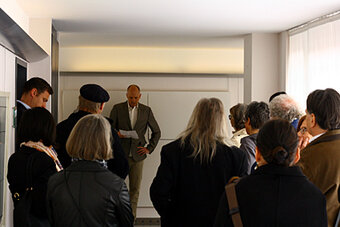
Jan Minners gave the introductory speech and drew attention to the various aspects of Szembek's art of drawing with sensitive words.
Vita
- Born in Memmingen/Iller in 1953.
- 1974-1976 Studied art history and philosophy at the University of Stuttgart.
- 1975-1981 Studied painting at the State Academy of Fine Arts Stuttgart.
- since 2006 at the Linda Treiber Gallery


